The N1
When you look at a map of Mozambique, and who hasn’t, you realise that it is a very large country but has only one road connecting its capital Maputo in the far south with the entire northern region. That road, as we had come to love it, was the National Road 1, or N1. We had enjoyed our time in southern Mozambique with its national parks, beaches and good roads but now it was time to head north to Malawi and the only way to do that was on the N1.
We left the seaside town of Maxixe and followed the N1 inland, through countless lively villages, loving the colourful scene of the locals opening their stalls for the day, walking to work, carrying water or firewood, or clothes to the river for washing or whatever else is required. We zigged back to the coast and stopped at the seaside town of Vilanculos, immediately getting a good vibe for the place.
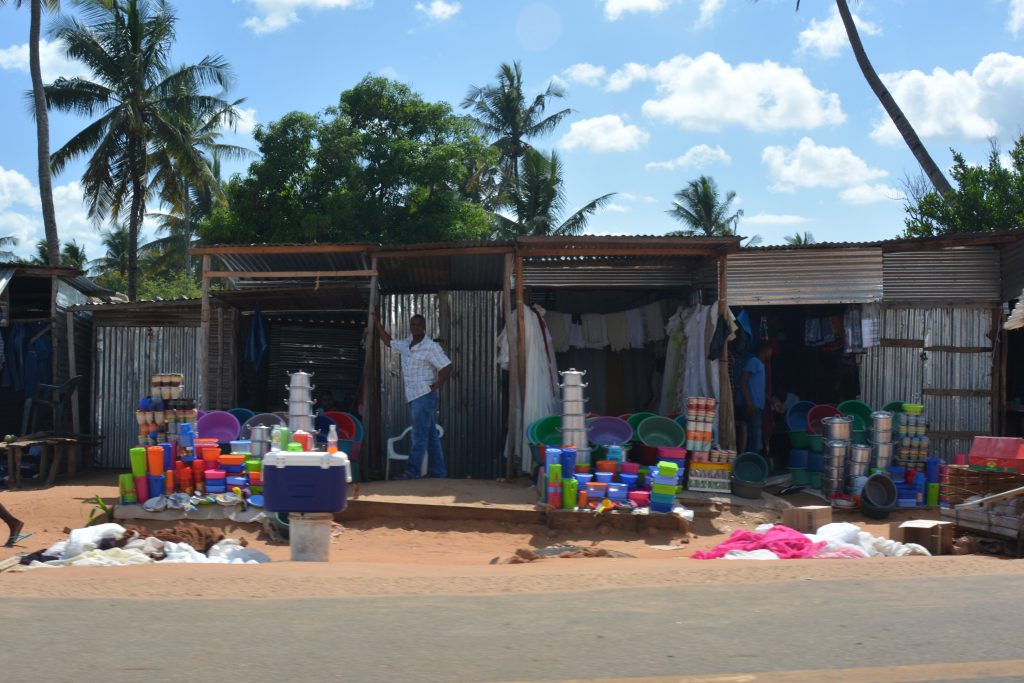
More things to buy at the roadside stalls, something to eat, something for your home, just keep driving until you find what you want
Vilanculos had a very lively town centre with a bopping market and a couple of useful supermarkets plus long sandy beaches, the requisite swaying coconut palm trees and relaxed lifestyle. In our short stay there we met numerous South Africans – usually because they wanted to talk about Tramp – who had relocated to Vilanculos and were loving it. We could see why, good weather, cheap and peaceful, very friendly locals. With the offshore islands offering additional relaxation options this place gets a big thumbs up.
With serious regret we headed further north but our friend the N1, Mozambique’s north to south national highway, gave out on us. Serious pot holes and road damage began to appear, then long sections that were impassable with the only option to drive on the dirt shoulders, then more sections where even that was difficult. We’re talking potholes more suitable for coffins, serious axle breakers, and the huge trucks that plied the road – we were one of only a few privately owned cars – had to inch along the ruined road. As the national transport spine of the country the N1 only works in the south.
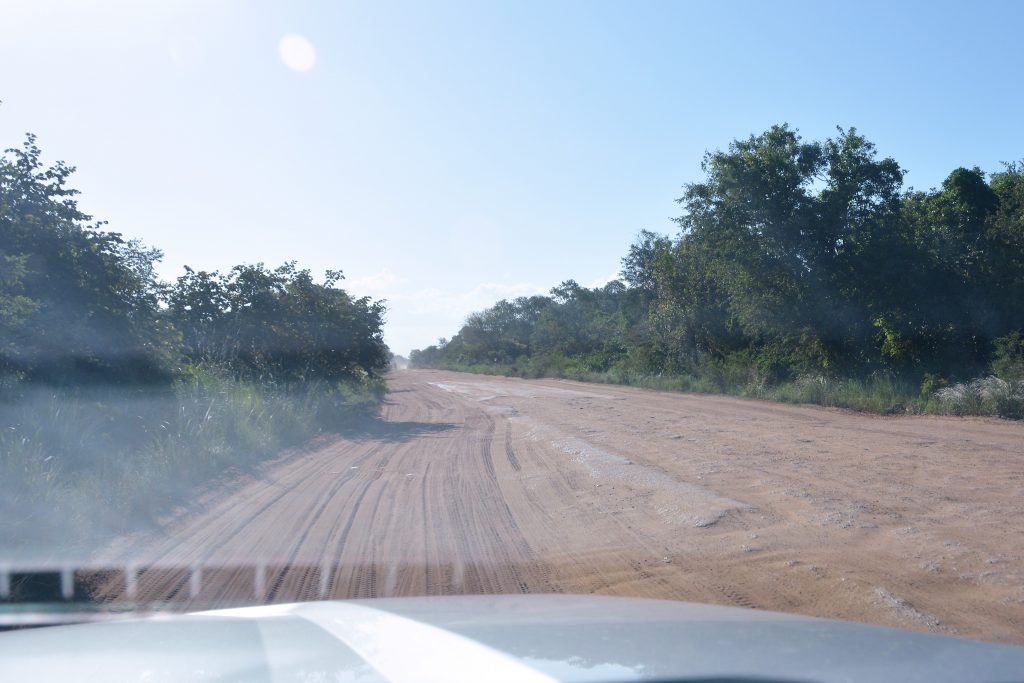
It’s impossible to photograph bad roads but I’ll give it a few tries – basically, you don’t want to have to do it
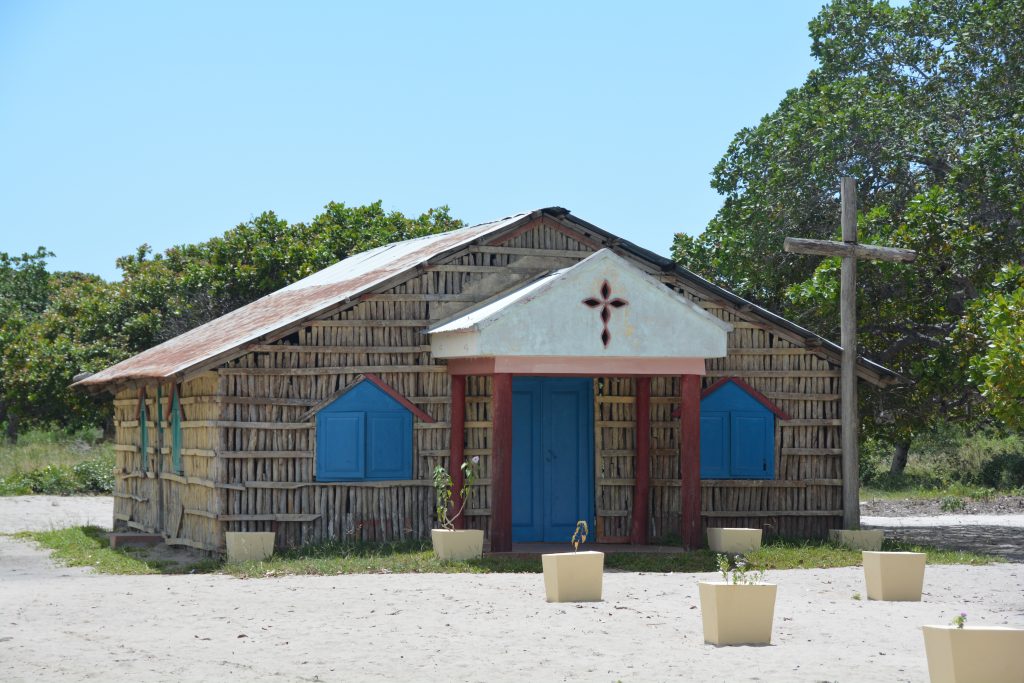
Mozambique is very religious and there are churches from many different denominations scattered everywhere – and some have very unusual architectural features
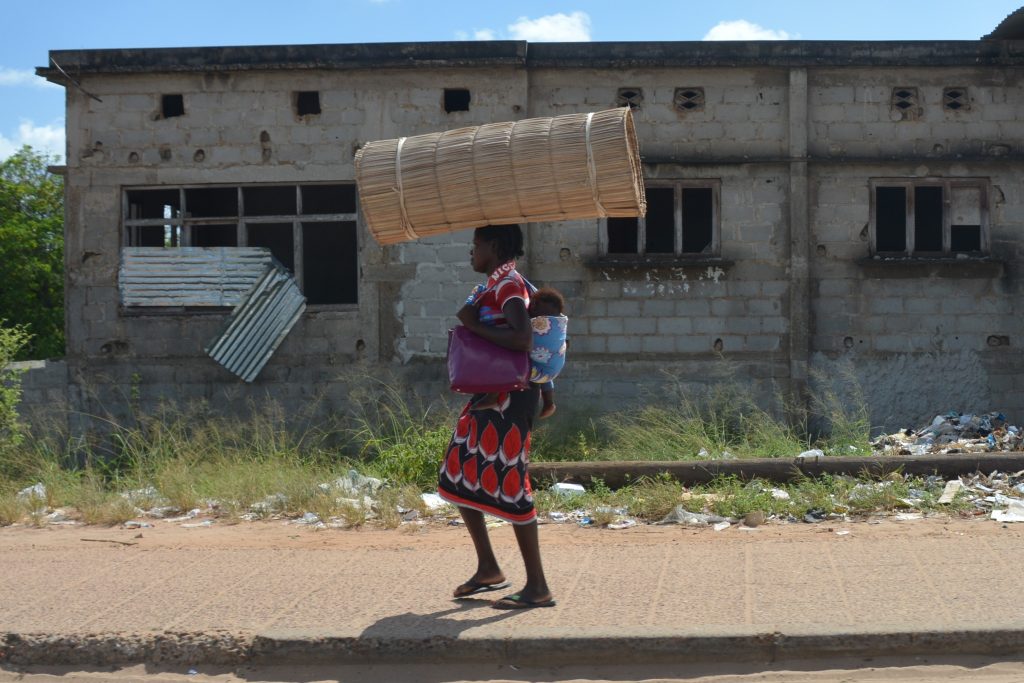
This woman represents the hardworking females of Mozambique – looking stylish while carrying a big load on her head and her baby on her back
We also faced many police checks, usually marked by their orange cones in the middle of the road, but on most occasions they would respectfully wave Tramp through. When we came to the huge bridge crossing the Save River and stopped to pay our modest toll the military tried to touch us up for food and drinks and asked for our passports as part of their intimidation technique. After being disappointed and finally letting us go we crossed the bridge only to be stopped again and go through the exact same routine again, sadly for them to the same effect. Just a bit of low level crass harassment of tourists, they didn’t know we’ve already been through Central America!
After more shocking road, and feeling sorry for Tramp’s overworked suspension, we finally pulled into a place called Buffalo Camp for the night. It was a pleasant end to a long and eventful day, celebrated around a fire in the soft red sand with the Southern Cross shining overhead. It almost felt like Australia…except it was Mozambique.
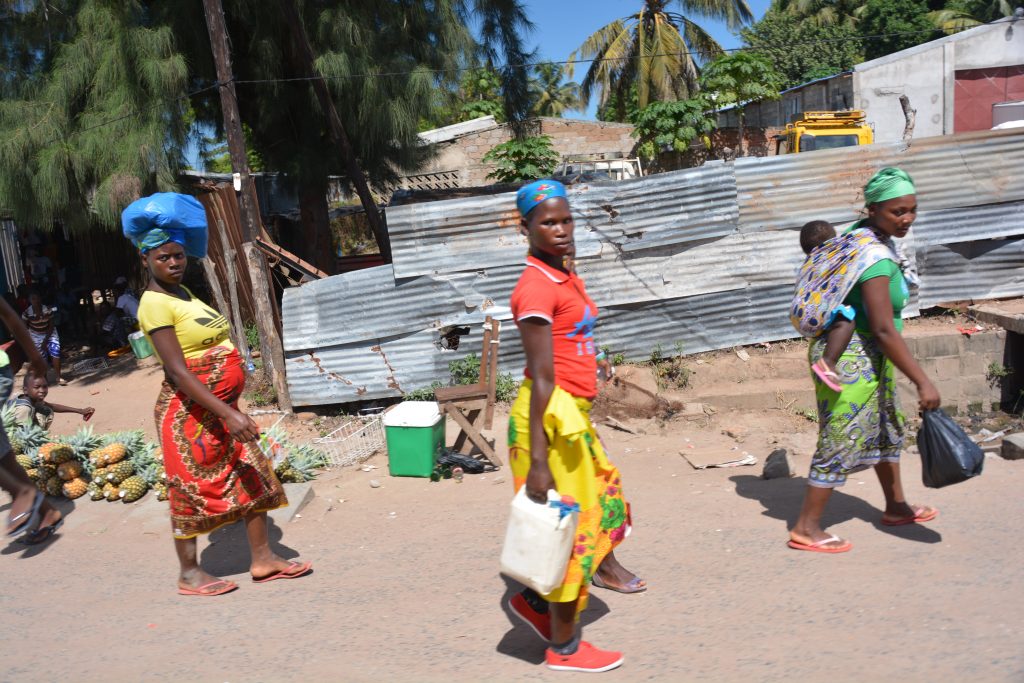
Women, its always the women, always colourfully dressed, doing the work along the roads in Mozambique
The next morning Tramp refused to start, almost in protest over having to go back out on those atrocious roads. Inexplicably his battery was dead but roared to life with a jump start from the manager’s car. Then it was back on road, such as it was, as we headed further north.
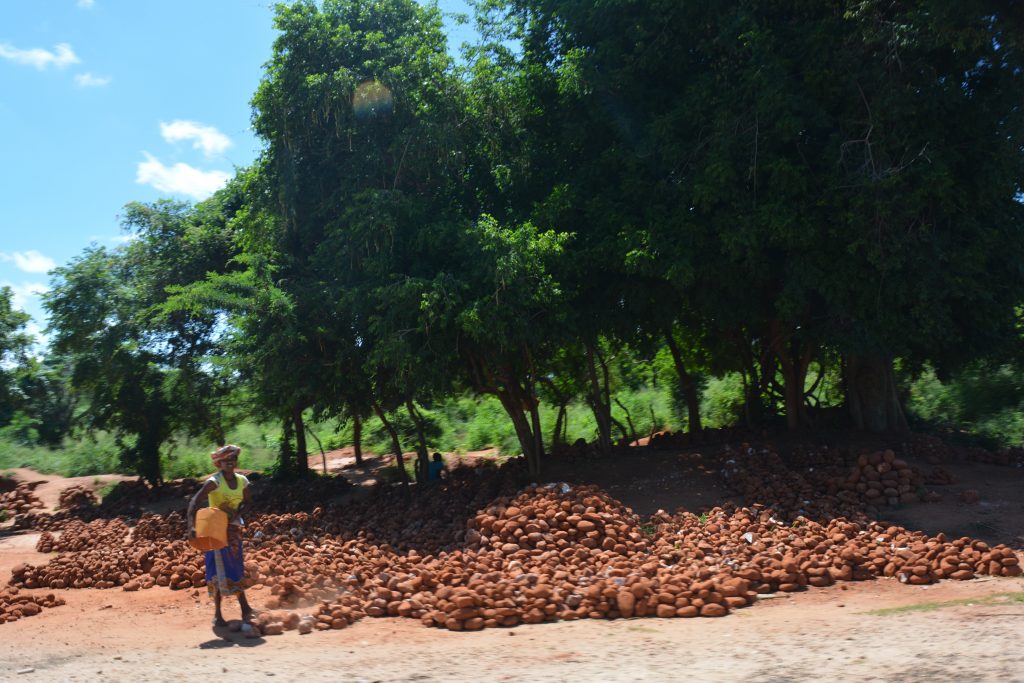
Life on the N1 takes many forms but this one baffled us – a person selling rocks…we saw this many times

This truck helps locals collect water and other goods between villages but he’s met the fate of many vehicles on the N1
Three days earlier we had seen signs for Inchope, over 700 kilometres away, and we wondered what wonders such a remote outpost in the middle of the African jungle might have. Disappointingly we discovered the town was no more than a large, dusty and chaotic truck stop at an unmarked intersection so we fuelled up and headed further north into the unknown.
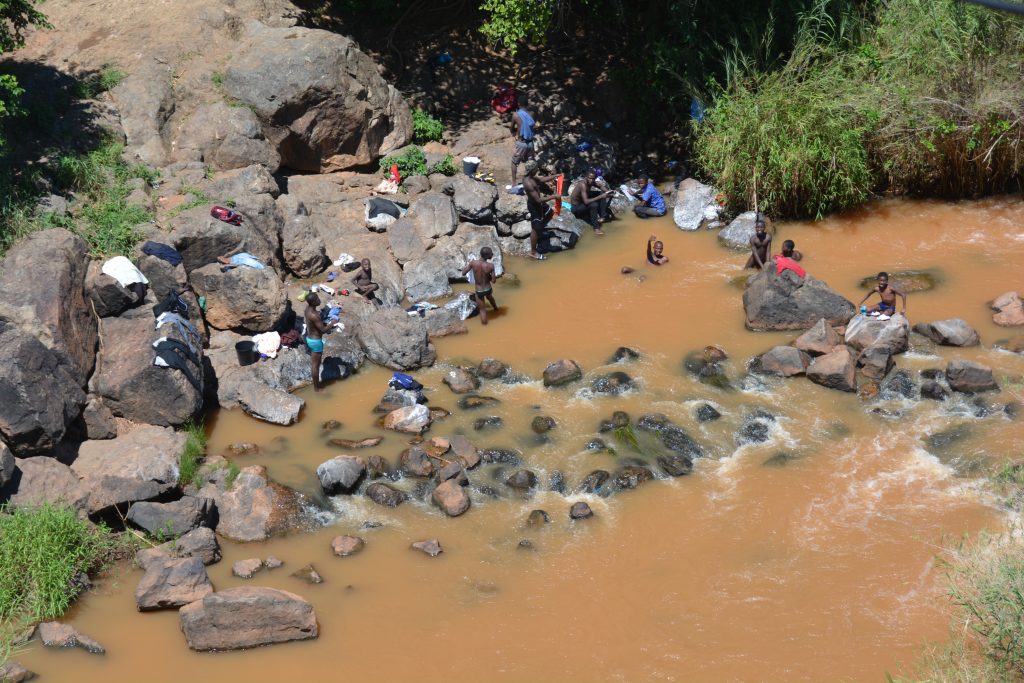
The road crossed many waterways, most filled with women washing clothes while the kids swam in the muddy waters
As we left Inchope, the last bit of civilisation for quite a distance, the road deteriorated to the point of being almost unrecognisable as a road. Long articulated trucks would trundle up and down the potholes at their own pace, their drivers resigned to a life on these roads. For us it was a constant struggle to slowly weave our way around deep potholes or just give up and crawl through the least deep ones.
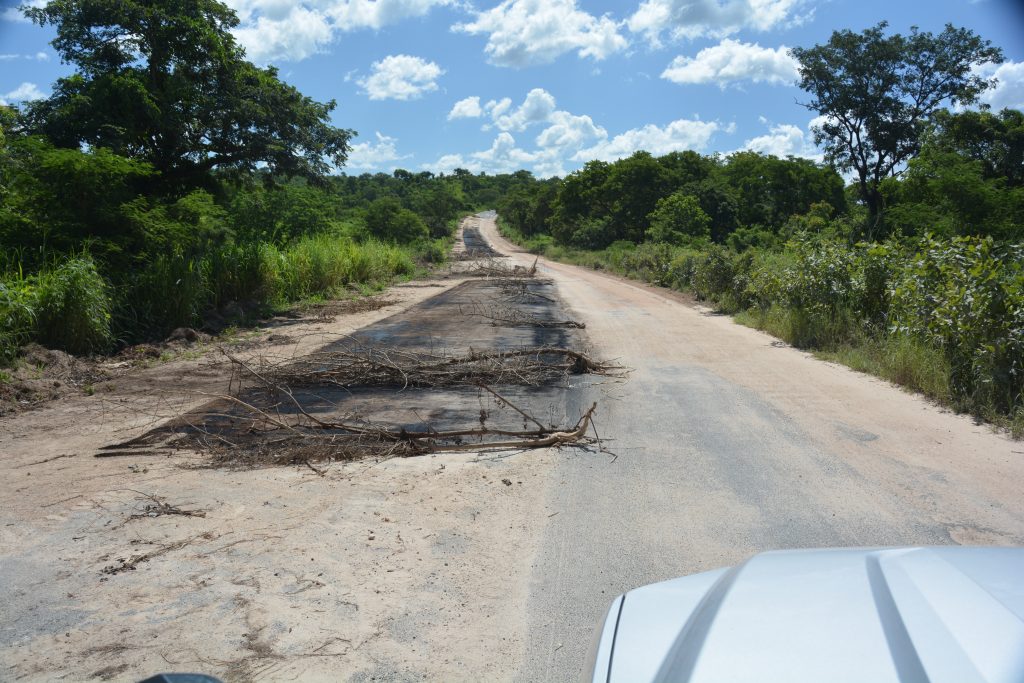
After Inchope we briefly saw this unique way of improving the roads – close half of it, spray oil on it, cover it with tree branches and then walk away forever
Some holes could be up to 50-60 cm (2 feet) deep with steep walls, other times dirt tracks would have been carved parallel to the old paved sections but they also contained holes of dark abyss. How this is travelled in the wet season when its muddy and these holes are all filled with water is beyond us. And how this road can be the only north-south artery of this huge country is part wonder and part disgrace. And we were also hindered by the tray between our camper and truck which we were holding together with a ratchet strap, courtesy of Sani Pass in South Africa.
With the road delaying our progress, light fading and nerves completely shot we came upon a small village which had a little clearing around its old school. We stopped, started talking to the locals, eventually spoke to the two school teachers who appeared to have the final say and they agreed we could park next to their school and camp the night. It was a fabulous outcome to a day of hard yakka. These people have so little and were happy to have us join them while asking for nothing in return. We were overwhelmed with gratitude and relief.

The next morning some kids show up for school – not all of them have shoes but check out their little school bags
We said our goodbyes to the two young school teachers as the kids started arriving at 7am for another day of learning. But again Tramp refused to start but we were cleverly able to jump start the truck battery off the house battery. Tramp’s battery has decided to fail us in such a remote location where there is absolutely no assistance available. This problem weighed heavily on us and prompted one of our favourite sayings, ‘it’s always something’.
Sadly, overnight the roads had not improved and we crawled our way slowly up Mozambique’s National Highway 1, carefully negotiating up, down and around every pothole, washout and muddy spot. The villages thinned out, the jungle got thicker and closer, the roads just kept getting worse. On more times than I could count I would have to stop and survey the road – which combination of holes, cracks and deep unmeasurable mud would I like to take Tramp through? And all of this with a ratchet strap tightly wound around the two layers of our tray to hold it all together.
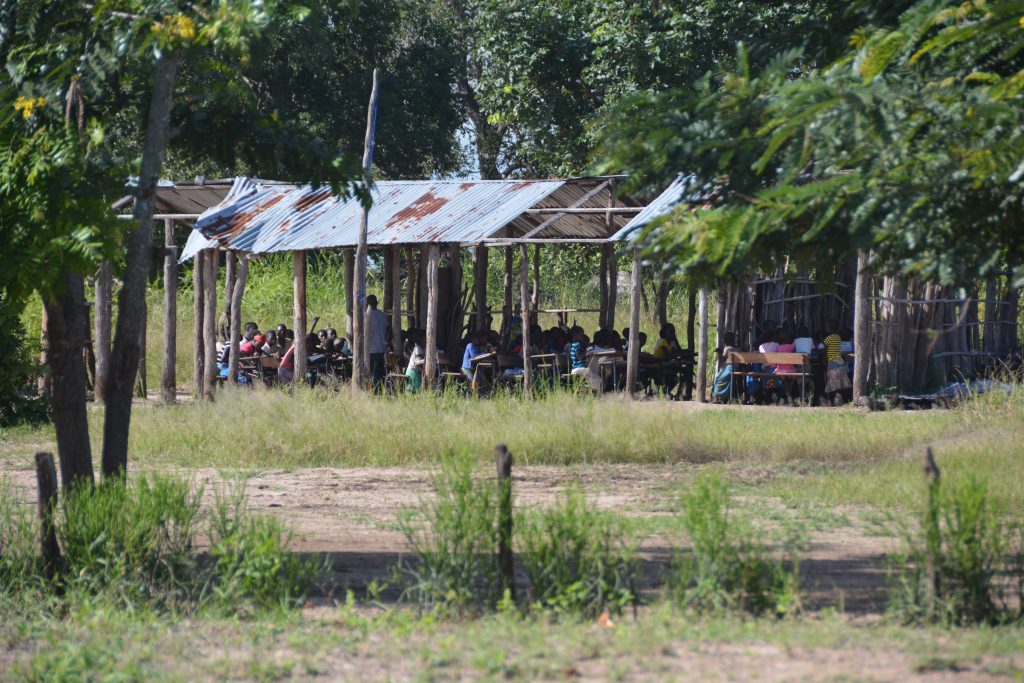
A school in a small village features outside learning – good for the steamy hot days but not good in the rainy season
After the longest five and a half hours of my driving life we covered 150 kilometres (95 miles) and pulled into the riverside town of Caia. We refuelled but again Tramp’s battery was dead so we got a jump start, then headed into town and found a guy in a little shop who could replace it. Ninety minutes later and many thousands of Mozambique Meticals lighter we pulled out with a new battery and a great relief. Another problem solved.
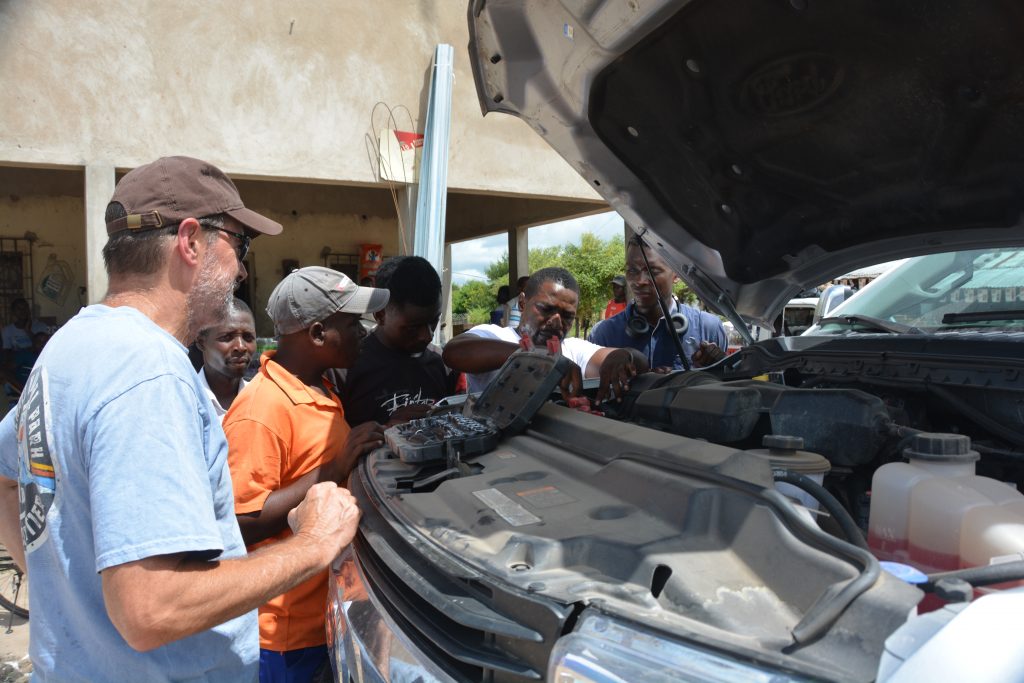
In Caia I was able to find a battery big enough to power Tramp – check out the committee changing the battery with my socket set because they didn’t have one (and had never seen a socket set)
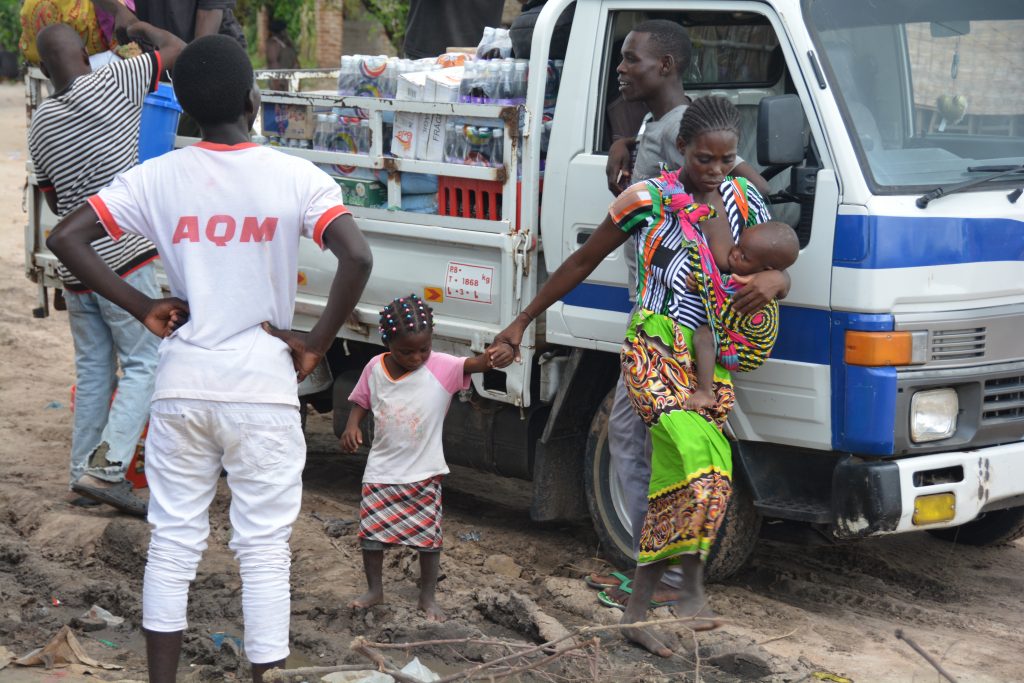
While the battery was getting changed Julie was taking in the local action, including this woman breastfeeding her infant while leading her child through the crowded streets
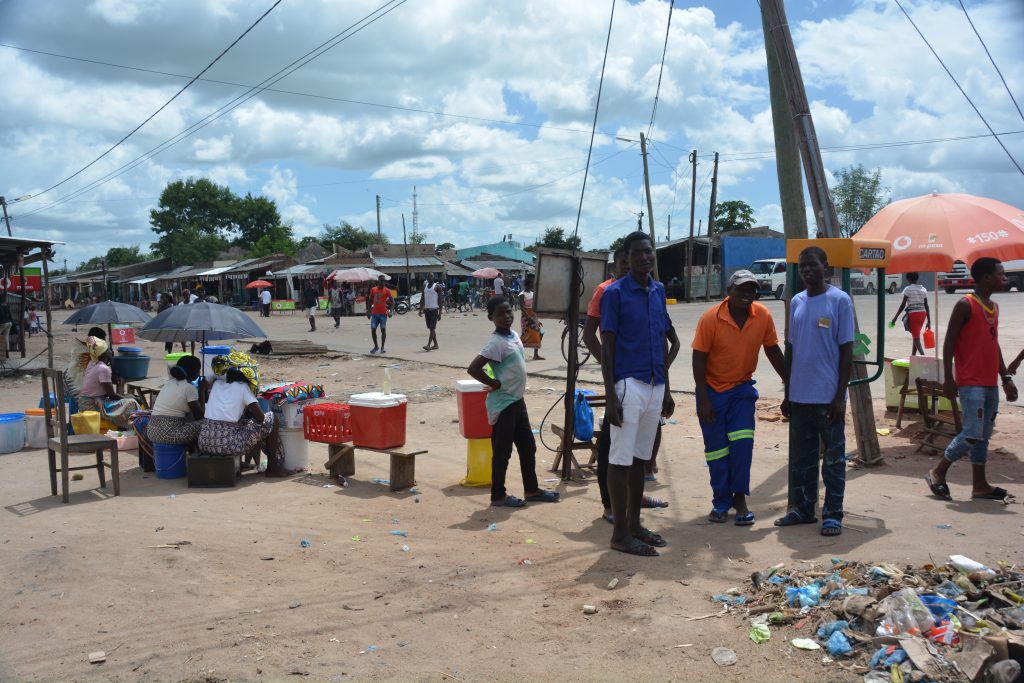
The locals were very interested in our battery problems – the big Ford is never seen in these remote parts
At the only bridge within cooee we crossed the mighty Zambesi River, perhaps the best river name of all time and a landmark for all things Africa, a wide muddy artery of this part of the continent, still high and swollen from the recent rainy season. We decided to call stumps early and camp at the nearby Cuacua Lodge, a brilliant decision as we swam in their pool and our camp overlooked the Zambesi. We enjoyed the late afternoon in the shade while listening to the kids splashing about and having fun in the water below us. Mozambique has had challenges, that’s for sure, but it also has had huge rewards.
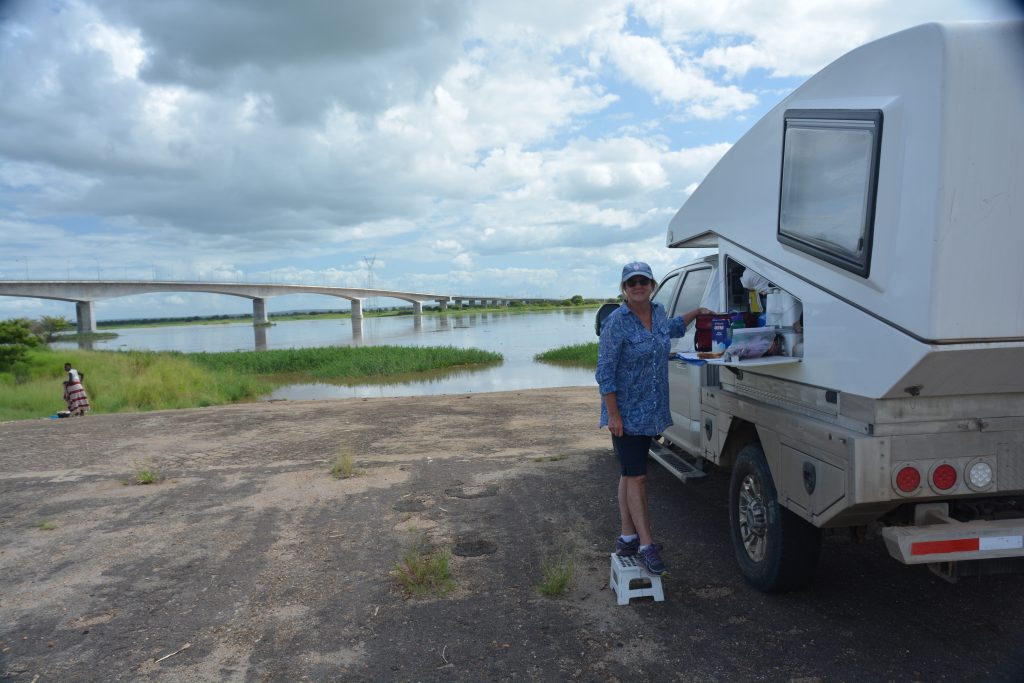
Julie making sandwiches for lunch on the banks of the mighty Zambezi River after we crossed their impressive bridge
The next day we headed towards the Malawi border, following our two GPS directions, all good. But then Karen, the much loved voice of our GPS, headed us off onto a narrow sandy track, overgrown by local grasses, weaving between impoverished homes, we thought better of it and turned around. Next track was slightly better, or maybe not, but a local guy wearing a USAID shirt said the road to the border was closed, presumably still too wet and muddy. So we turned around again, back to the hard-to-leave N1, which by this stage had improved nicely and was a relatively smooth ride.
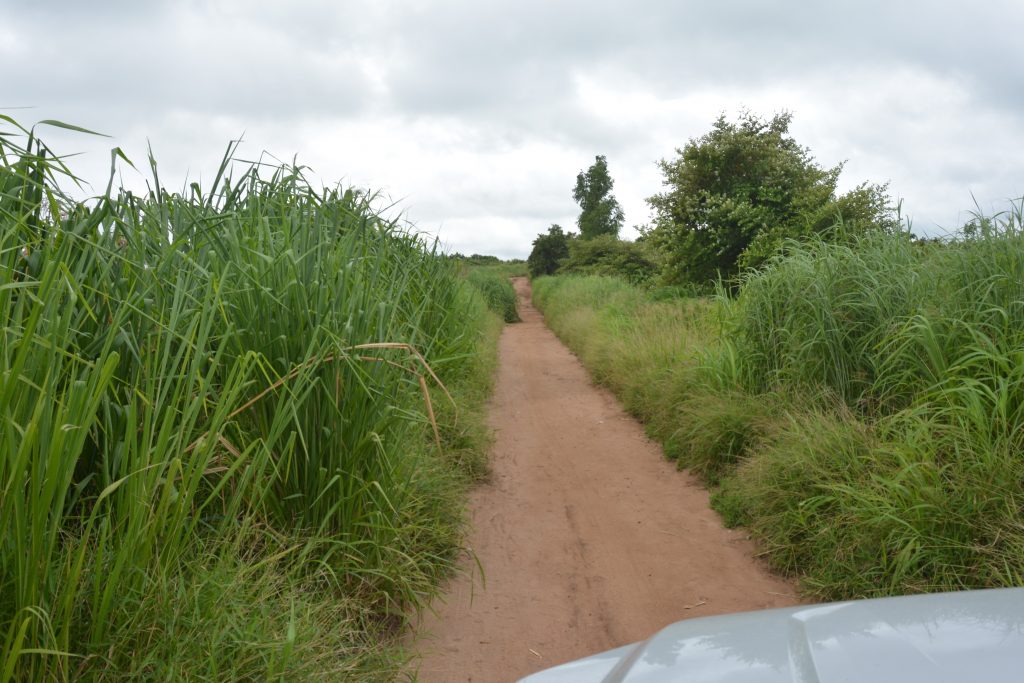
Karen, our GPS, had a bad morning, sending us off on a few narrow tracks that we eventually gave up on and turned around

The teacher gives us a friendly wave in the middle of his lessons in this school of a small villages
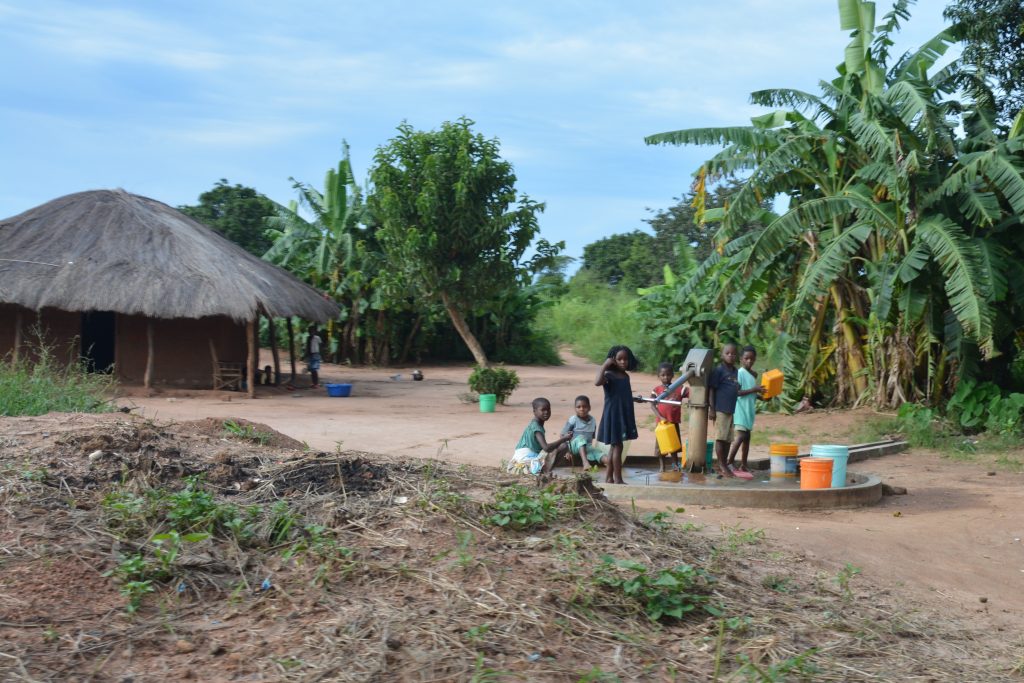
The quintessential village scene – locals meeting at the well pump to get their daily supply of water
We finally found the third track towards a different border, followed its narrow sandy path through more remote villages, ever hopeful we would make it through. The looks on some of these poor villagers’ faces, living in the most basic and humble conditions imaginable, was as if they had just seen aliens pass by. Not aliens, just Julie and Bill and Tramp slightly lost in the jungles of central Mozambique.
By the time we found the paved road to the border it was too late to make the distance before the border closed so we found a church on the side of the road, asked the older people of the village if we could camp there the night, and with their permission set up camp. As entertainment and a spectacle to these villagers our presence couldn’t have been any better and we had a large audience of children watching us closely until dark. And so our last day in Mozambique was not our last day and we spent an unusual night in a village’s church grounds the centre of everyone’s attention. As you do.
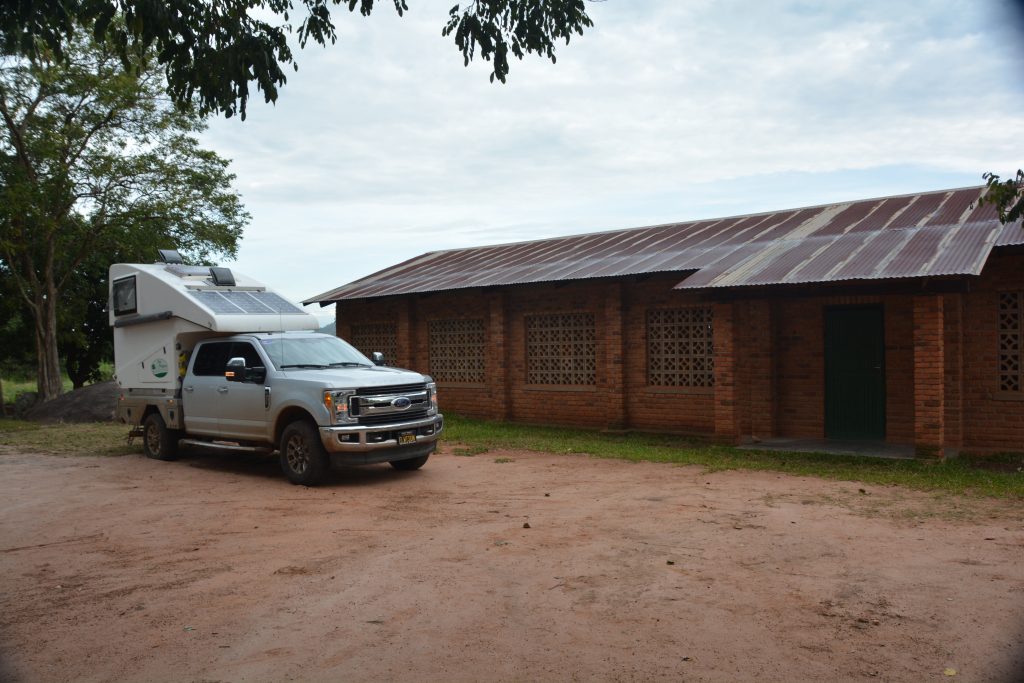
The forlorn church in a small village was our home for the night – we were a popular form of entertainment for everyone
The next morning we awoke to a flat tire caused by a slow leak overnight. With our favourite saying ‘It’s always something!’ top of mind I hooked up one of our least used bits of kit on Tramp – an air compressor that was installed under the bonnet and connects to the truck’s battery. I was able to reinflate our flat tire while Julie was giving English lessons to the local kids and then we enjoyed the beautiful early morning drive to the Mozambique-Malawi border.

Julie, ever the diplomat and teacher, helps the kids on the English school work, to their huge delight
We had heard mixed reports about travelling in Mozambique but we absolutely loved it – beautiful places, wonderful people, totally safe the whole time, just great. Hopefully they’ll fix the roads before we come back!
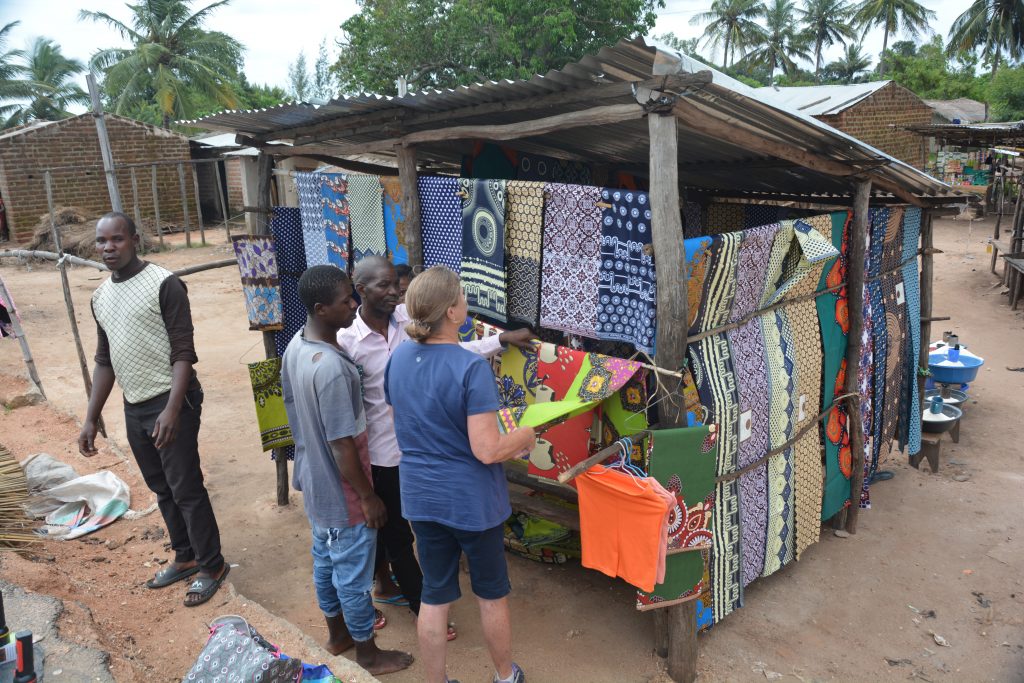
Julie is casting her keen eye across some beautiful sarongs in a typical roadside stall in central Mozambique
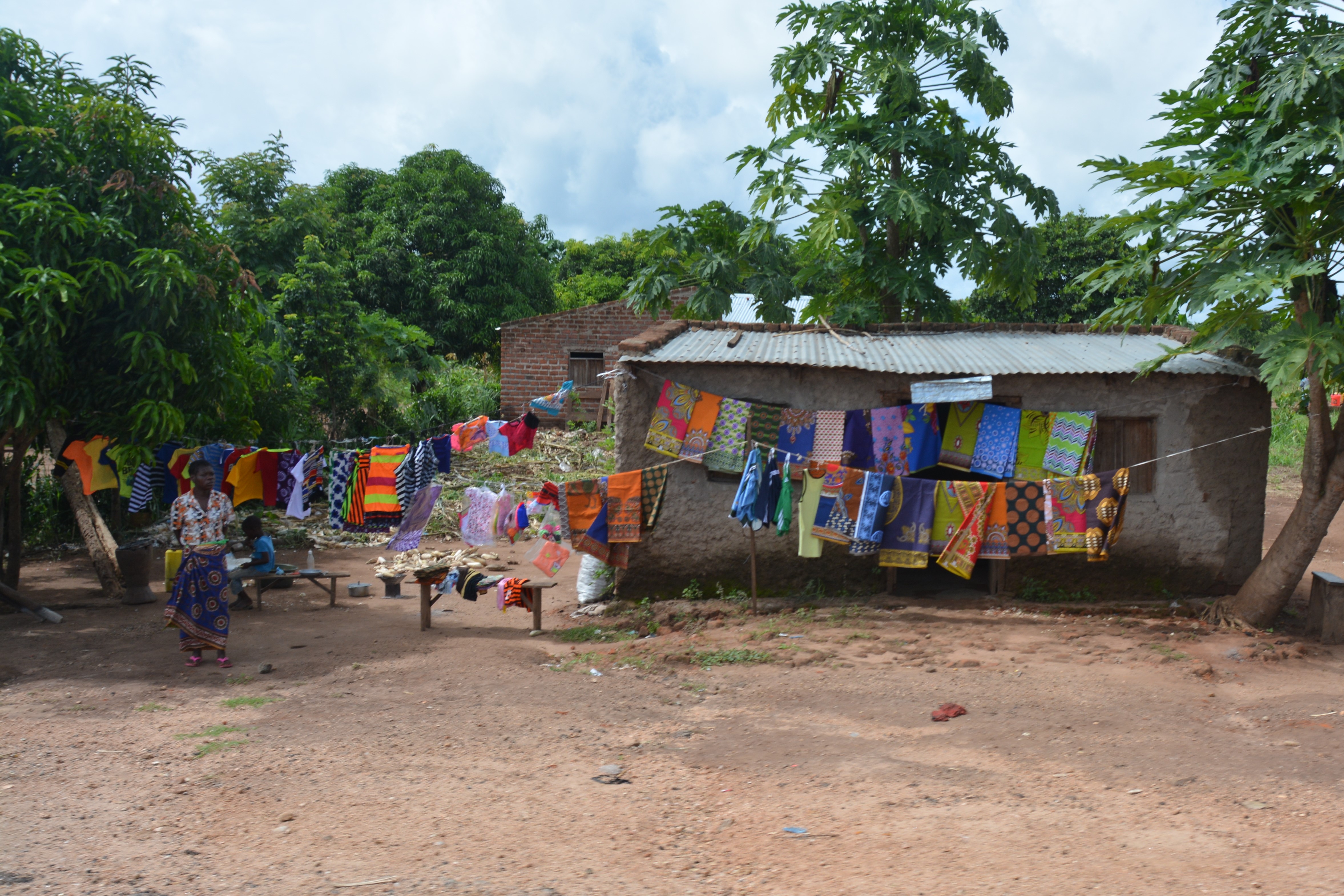





















My house battery charges from the alternator via a Blue Sea ML-ACR automatic relay, which I’ve used to jump start the engine from the house battery. If you have one of those under the hood, when the truck battery is dead, push the button in the middle of the yellow switch on the ML-ACR to connect the house battery, then start the engine. To restore the ML-ACR to automatic, turn the yellow switch to Disabled, and then back to Enabled/Off.
Hi Carl,
Yes, we do have a Blue Sea relay under the hood and we were able to jump start the truck battery with the house battery once just as you described. When the truck wouldn’t start the next time we had to start it (after filling with fuel) this trick didn’t work – my guess was that the truck battery was so dead by then the house battery wouldn’t start it. In any case, its a great trick when you are in an awkward situation – as we were. Thanks for this. Bill
Great to see another side of Mozambique apart from what we see on the news.
Loving reading about your adventures and seeing photos of the beautiful animals.
Col would recommend always carrying some fencing wire for repairs in isolated situations!
We have been lucky and have had to use it only once for us but several times for others in trouble.
Hi Margaret, yes we were very lucky and missed the cyclone in Mozambique by only a few days. We really felt sorry for those poor people – they definitely didn’t serve that! And I agree with Col about fencing wire, I carry a good supply in different grades. But my best friend on the road is duct tape – it is so important that it rides in our centre console with our passports!
Oh where do I start. Your travels are just amazing and I love that you can get up close and personal to the real people in the countries you visit. Julie I can see you wanting to give a few hugs to the little ones and Bill you revel in showing Tramp to everyone who wants more details. You are both truly amazing and really cut out for these travels but I hope only for a short time. Stay safe and keep on tracking across the unknown (hopefully with better roads). Love you both xoxo
Hi Anne, you know us well. Julie in particular loves the little kids and engages with them all the time. And I’m always happy to have a little ‘truck talk’ which is just as well because I get asked about Tramp probably 20 times a day!